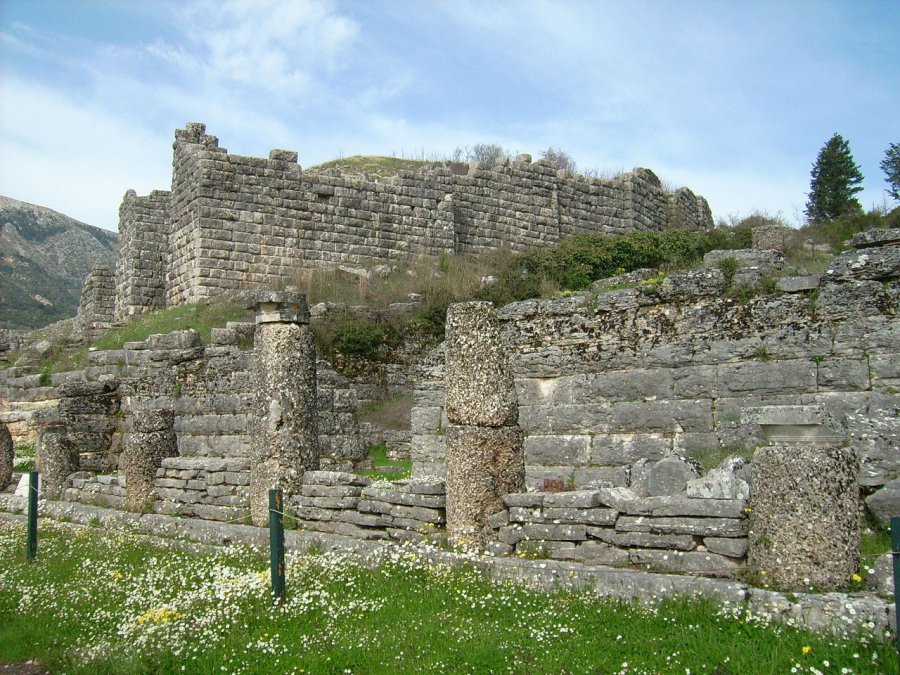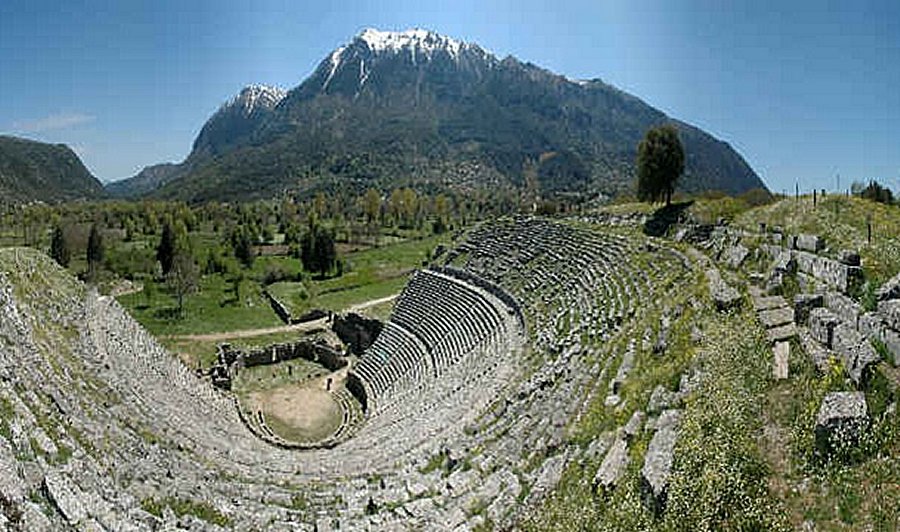Oldest Greek Oracle At Dodona And Zeus Sacred Oak Tree – Where Oracle of Dodona: Sacred Place Where Gods Spoke To Humans For The First Time
A. Sutherland - AncientPages.com - Dodona (Greek Dōdōnē) was an ancient Greek town located in Epirus; the historical region now shared between Greece and Albania.
Dodona was also the ancient seat of the oracle of Zeus, and Dione, Aphrodite's mother - honored as the wife of Zeus instead of Hera.
The shrine of Dodona was probably the oldest Greek oracle, dating to the second millennium BC, according to the Greek historian Herodotus. It was the place of several impressive ceremonies.
The earliest mention of Dodona is in the Iliad's Book XVI, where its priests, called by Homer the Selloi (or Helloi), made predictions from the rustling of the sacred oak leaves and other sounds. Herodotus, but no earlier writer, mentions priestesses, the givers of the oracles, undoubtedly under some guidance from the god.
In early times, Dodona was the most famous and respected among the oracles, where signs gave the prophecy.
Later, oracles were taken at Dodona from lots and the ringing of an iron basin. In front of this basin was an iron statue of a boy standing with a whip formed of three chains, from which some buttons hung which touched the basin. If the whip moved in the breeze, the buttons sounded against the basin.
Oracle of Zeus at Dodona. Image credit: Marcus Cyron- CC BY-SA 3.0
According to a new interpretation, the oracular sound originated from bronze objects hanging from oak branches and sounding similar to a 'wind-chime, a percussion-like instrument constructed from suspended tubes, rods, bells, or other things, usually made of metal or wood.
Dodona oracle was usually used to settle more private matters regarding marriage, children, or theft, and it was famous but relatively inaccessible. Delphi later replaced the site. However, Dodona never lost its reputation, and the states of Athens and Sparta still consulted it.
It existed in the 2nd century AD and did not seem to have disappeared before the 4th.
There are several archaeological remains at the ancient site of Dodona. Still, perhaps the most representative among the ruins is Dodona's old theatre, which had a capacity of 18,000 and had 55 rows of seats divided into three horizontal sections separated by ten steps.
Panorama of the theater of Dodona, the modern village Dodoni, and the snow-capped Mount Tomaros are visible in the background. Image credit: Onno Zweers - CC BY-SA 3.0
Dodona's theatre was one of the largest in Greece, with its 130 m diameter and dated from the 3rd BC. It was built by Pyrrhus (319-272 BC), the king of Epirus, a Greek general and statesman of the Hellenistic period, who was one of the fiercest opponents of Rome.
The cult and oracle at Dodona remained until 391 AD; later, it ceased to exist as a pagan site. The sacred oak tree was cut down. In the 5th-6th century, a Christian Basilica was built in Dodona, and the place became the bishop's seat.
Following the Slav invasion in the 6th century AD destroyed Dodona site that was abandoned.
Written by – A. Sutherland AncientPages.com Staff Writer
Updated on October 20, 2022
Copyright © AncientPages.com All rights reserved. This material may not be published, broadcast, rewritten or redistributed in whole or part without the express written permission of AncientPages.com
More From Ancient Pages
-
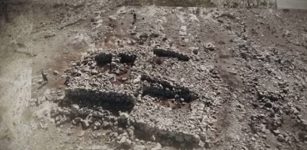 Controversial ‘Anomaly’ Discovered On Mount Ebal Could Be Biblical Joshua’s Altar
Biblical Mysteries | Apr 6, 2020
Controversial ‘Anomaly’ Discovered On Mount Ebal Could Be Biblical Joshua’s Altar
Biblical Mysteries | Apr 6, 2020 -
 On This Day In History: Battle Of Megiddo Between Thutmose III And King Of Kadesh’s Coalition – On Apr 16, 1457
News | Apr 16, 2016
On This Day In History: Battle Of Megiddo Between Thutmose III And King Of Kadesh’s Coalition – On Apr 16, 1457
News | Apr 16, 2016 -
 Mama Cocha – Inca Goddess Of The Sea With Strong Connection To Lake Titicaca, Peru
Featured Stories | May 26, 2020
Mama Cocha – Inca Goddess Of The Sea With Strong Connection To Lake Titicaca, Peru
Featured Stories | May 26, 2020 -
 Remains Of Medieval Port Discovered In Eindhoven
Archaeology | Nov 17, 2020
Remains Of Medieval Port Discovered In Eindhoven
Archaeology | Nov 17, 2020 -
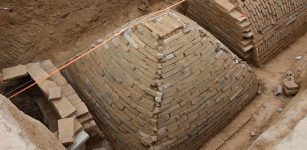 Mysterious Pyramid-Shaped Tomb Discovered In China
Archaeology | Mar 15, 2017
Mysterious Pyramid-Shaped Tomb Discovered In China
Archaeology | Mar 15, 2017 -
 Mirpur Jain Temple: Stunning Artwork Of Ancient Craftsmen Of India
Featured Stories | May 17, 2021
Mirpur Jain Temple: Stunning Artwork Of Ancient Craftsmen Of India
Featured Stories | May 17, 2021 -
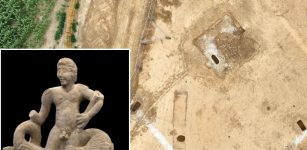 Spectacular Statue Of Sea God Triton Found In Roman Mausoleum In Kent
Archaeology | Sep 13, 2023
Spectacular Statue Of Sea God Triton Found In Roman Mausoleum In Kent
Archaeology | Sep 13, 2023 -
 On This Day In History: Dr Martin Luther King Was Born – On Jan 15, 1929
News | Jan 15, 2017
On This Day In History: Dr Martin Luther King Was Born – On Jan 15, 1929
News | Jan 15, 2017 -
 Oldest Human Remains Unearthed In Vietnam
Archaeology | Nov 15, 2023
Oldest Human Remains Unearthed In Vietnam
Archaeology | Nov 15, 2023 -
 8 Billion People: How Different The World Would Look If Neanderthals Had Prevailed
Featured Stories | Nov 18, 2022
8 Billion People: How Different The World Would Look If Neanderthals Had Prevailed
Featured Stories | Nov 18, 2022 -
 Starkad The Viking – Legendary Norse Hero Who Was Both Blessed And Cursed By Gods
Featured Stories | Jul 29, 2019
Starkad The Viking – Legendary Norse Hero Who Was Both Blessed And Cursed By Gods
Featured Stories | Jul 29, 2019 -
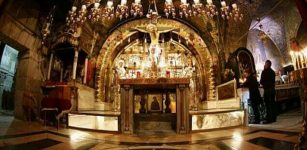 Jesus Christ’s Tomb Dates To Roman Emperor Constantine’s Era – Researchers Confirm
Archaeology | Dec 12, 2017
Jesus Christ’s Tomb Dates To Roman Emperor Constantine’s Era – Researchers Confirm
Archaeology | Dec 12, 2017 -
 What Can Languages And Grammar Reveal About Our Ancient History?
Archaeology | Aug 20, 2021
What Can Languages And Grammar Reveal About Our Ancient History?
Archaeology | Aug 20, 2021 -
 Coca-Cola Was Invented As A Cure For Headache And Hangover In The 1880s
Ancient History Facts | Oct 23, 2017
Coca-Cola Was Invented As A Cure For Headache And Hangover In The 1880s
Ancient History Facts | Oct 23, 2017 -
 Why Is Europe Called Europe?
Ancient History Facts | Apr 21, 2016
Why Is Europe Called Europe?
Ancient History Facts | Apr 21, 2016 -
 Secret History Of The Micmac – The Mysterious Red Earth People
Civilizations | Jun 22, 2020
Secret History Of The Micmac – The Mysterious Red Earth People
Civilizations | Jun 22, 2020 -
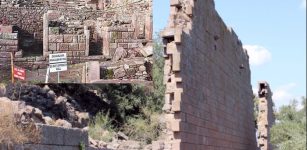 Headteacher’s Sarcophagus Unearthed In Ancient City Of Aigai, Turkey
Archaeology | Jan 25, 2017
Headteacher’s Sarcophagus Unearthed In Ancient City Of Aigai, Turkey
Archaeology | Jan 25, 2017 -
 Famine And Disease Drove The Evolution Of Lactose Tolerance In Europe
Archaeology | Jul 27, 2022
Famine And Disease Drove The Evolution Of Lactose Tolerance In Europe
Archaeology | Jul 27, 2022 -
 Oldest case of leukemia found on 7,000-Year-old skeleton
News | Aug 23, 2015
Oldest case of leukemia found on 7,000-Year-old skeleton
News | Aug 23, 2015 -
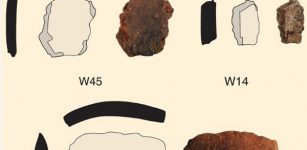 3,000-year-old pottery found in Papua New Guinea’s highlands
News | Sep 3, 2015
3,000-year-old pottery found in Papua New Guinea’s highlands
News | Sep 3, 2015


